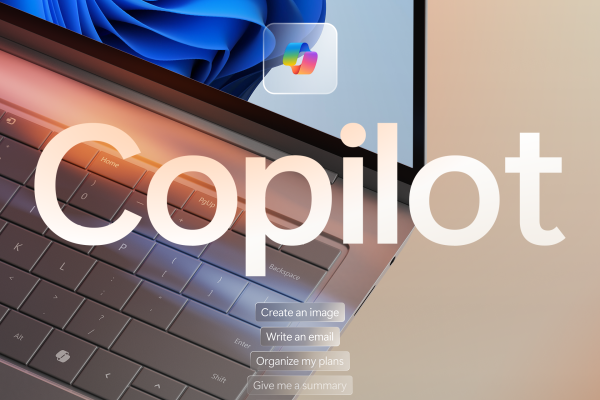Microsoft evidently envisions Copilot, the umbrella brand for its portfolio of AI-powered, content-generating technologies, becoming a significant future revenue line-item. And that’s perhaps not far off base; according to the company, more than 40% of the Fortune 100 participated in its Copilot early access program.
But given the enormous cost of running GenAI models in the cloud, getting Copilot from expenditure to reliable revenue generator will require sustained — and large-scale, ideally — growth.
Surely aware of this, Microsoft is today launching a consumer-focused paid Copilot plan and loosening the eligibility requirements for enterprise-level Copilot offerings. The goal, it appears, is to broaden the base of potential paying Copilot customers while making Microsoft’s existing services — namely Word, Excel and the other apps within the tech giant’s Microsoft 365 family — more attractive through AI features.
Copilot Pro — the new consumer plan, priced at $20 per user per month — gives customers access to Copilot GenAI features across Word, Excel (in preview, only in English for now), PowerPoint, Outlook and OneNote on PC, Mac and iPad — if they have a Microsoft 365 Personal or Family plan, that is. Copilot Pro doesn’t come bundled with a Microsoft 365 subscription. As with the Copilot enterprise offering (Copilot for Microsoft 365), it’s a premium add-on — bringing the total cost of the lowest-tier Microsoft 365 subscription to $27 per month ($6.99 per month for Microsoft 365 Personal plus $20 for Copilot Pro).
The Microsoft 365 capabilities in tow with Copilot Pro are the same that enterprise customers have had for a while.
In Word and OneNote, Copilot writes, edits, summarizes and generates text. Copilot in Excel and PowerPoint turns natural language commands into designed presentations and data visualizations. And in Outlook, Copilot helps draft email responses with toggles to adapt the length or tone.
Beyond the Microsoft 365 upgrades, Copilot Pro subscribers get 100 “boosts” per day in Designer (formerly Bing Image Creator), Microsoft’s AI-powered image creation tool, to speed up the image generation process — plus improved generation quality and landscape formatting options. And they have priority access to the newest GenAI models underpinning Copilot, including OpenAI’s GPT-4 Turbo, for what Microsoft claims is better performance during peak times.
In the future, Copilot Pro subscribers will be able to switch between models depending on their preferences and, if they require even greater customization, tap Microsoft’s forthcoming Copilot GPT Builder to create “Copilots” tailored for specific topics from sets of prompts.
Copilot GPT Builder sounds suspiciously like OpenAI’s recently released GPT Builder for creating custom chatbots powered by OpenAI GenAI models. But one presumes that Copilot GPT Builder will come with Microsoft service- and app-specific integrations.
Copilot for business
As Microsoft rolls out a premium Copilot for consumers, it’s broadening the service’s business availability, as well.
Starting today, Copilot is generally available for organizations subscribed to Microsoft 365 Business Premium, Microsoft 365 Business Standard, Microsoft 365 E3 and E5 or Office 365 E3 and Office E5. Previously, Copilot for Microsoft 365 had a 300-user minimum purchase and required a Microsoft 365 license, but both of those requirements have been done away with.
There are a few differences to note between Copilot for Microsoft 365 and Copilot Pro, the main one being Copilot in Teams. Enterprise Copilot customers — not consumers — get a “Copilot” in Teams that provides real-time summaries and action items, handling tasks such as identifying people for follow-ups and creating meeting agendas.

The different Copilot plans, compared. Image Credits: Microsoft
In addition, Copilot for Microsoft 365 comes with what Microsoft describes as “enterprise-grade data protection” and the Semantic Index, a back-end system that creates a map of the data and content in an organization to allow Copilot to deliver ostensibly more personal and relevant responses.
Copilot for Microsoft 365 customers can also access expanded customization options via Copilot Studio, a souped-up version of Copilot GPT Builder. Unveiled in November, Copilot Studio lets users build their own chatbots and plug-ins and conduct fine-tuning with first-party company data.
New free features
Microsoft’s attention might be turning toward paid Copilot plans, but the company’s not completely neglecting free users.
Today marks the launch of Copilot GPTs, which like OpenAI’s GPTs are tailored to topics of particular interest. A handful of Copilot GPTs rolled out this morning on the web client for Copilot, fine-tuned to answer questions about things like fitness, travel and cooking.
A free mobile app for Copilot — with access to GPT-4, DALL-E 3 for image creation and the ability to use images on a phone while chatting with Copilot, as well as chat history syncing between mobile, PC and the web — is now live for Android and iOS. And Microsoft says that it’s adding Copilot to the Microsoft 365 mobile app for Android and iOS for users with a Microsoft account. Set to roll out over the coming month, the Microsoft 365 mobile app Copilot integration will let users export content created with Copilot to a Word or PDF document.
Lastly, Microsoft says it’s expanding the number of languages Copilot supports. In the first half of 2024, Copilot will expand to Arabic, Czech, Danish, Dutch, Finnish, Hebrew, Hungarian, Korean, Norwegian, Polish, Portuguese, Russian, Swedish, Thai, Turkish and Ukrainian.
